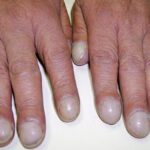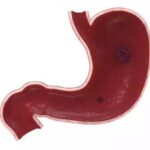Summer is a great time to enjoy the sun, travel, and relax. However, few people are aware of the health risks that summer also brings, especially the increased risk of cancer. According to medical experts, summer is a period when exposure to carcinogens increases, particularly for three types of cancer: skin cancer, stomach cancer, and lung cancer.
1. Skin Cancer Risk from UV Rays: Don’t Be Complacent
One of the biggest hazards of summer is the damaging effect of ultraviolet (UV) rays from the sun. Prolonged exposure to sunlight without protection can cause significant harm to the skin and may lead to skin cancer, particularly melanoma, the most dangerous form of skin cancer.

Early Warning Signs of Skin Cancer:
- Mole changes in size, color, or shape
- Non-healing skin sores or lesions that persist for several weeks
- Itching, pain, or bleeding from abnormal spots
Prevention Tips:
- Always apply sunscreen with an SPF of 30 or higher
- Avoid being outdoors during peak hours (10 am – 3 pm)
- Wear sunglasses, a wide-brimmed hat, and long-sleeved clothing when in the sun
- Get regular skin checks if you have risk factors
2. Stomach Cancer Risks from Summer Food Habits
The hot summer weather can cause food to spoil and become contaminated if not stored properly. Street food, outdoor barbecues, and ice consumed during summer may increase the risk of stomach cancer due to prolonged exposure to the bacterium Helicobacter pylori, molds, and harmful chemicals.
Warning: The habit of consuming charred barbecue foods, heavily salted fermented vegetables, and preserved meats can lead to the formation of nitrosamines, which are carcinogenic.

Prevention Strategies:
- Consume fresh food and ensure thorough cooking; avoid leaving food overnight
- Refrain from consuming questionable or spoiled food
- Avoid using ice of unknown origin
- Stay hydrated, and increase your intake of antioxidant-rich fruits and vegetables
3. Air Pollution and Lung Cancer in Summer
High temperatures, combined with vehicle emissions, fine dust, and coal smoke, severely pollute the air in urban areas during summer. This situation increases the incidence of respiratory diseases, including lung cancer, which currently has the highest mortality rate.
Who Is at Risk?
- Individuals living in large cities or near industrial areas
- Those frequently exposed to tobacco smoke, kitchen smoke, or straw burning smoke
Risk Reduction Strategies:
- Wear a high-quality mask when going out
- Limit outdoor activities during hot and polluted periods
- Introduce indoor greenery and use air purifiers
- Quit smoking and avoid secondhand smoke
4. Risks Associated with Summer Lifestyle Habits
Not just environmental and dietary factors, but also incorrect lifestyle habits during summer can indirectly contribute to cancer risk. Many individuals tend to stay up late, consume more alcohol while traveling, eat indiscriminately, and reduce physical activity. These habits weaken the immune system and increase the likelihood of malignant cell development.
Recommendations for a Healthy Summer Lifestyle:
- Get sufficient sleep, limit alcohol intake, and avoid fast food
- Engage in light morning or evening exercises
- Undergo regular health check-ups, especially if you have a medical history
- Drink enough water (2 – 2.5 liters per day) to stay hydrated
5. Take Charge with Early Screening and Check-ups – Protect Yourself and Your Loved Ones
According to the World Health Organization (WHO), approximately 30-50% of cancers can be prevented if detected early and combined with appropriate lifestyle changes. Summer is a time when health care may be neglected, so it’s crucial to take the initiative and undergo regular health check-ups, especially if you have risk factors such as a family history of cancer, a history of smoking, or being over the age of 40.
“Persistent Cough and Flu: Beware of These 4 Overlooked Signs of Lung Cancer”
Lung cancer is often diagnosed at a late stage, partly because its early signs and symptoms can be mistaken for those of the common cold, flu, or minor health issues. This often leads to individuals neglecting or overlooking these warning signs, missing the golden opportunity to detect and treat the disease in its early stages.






































